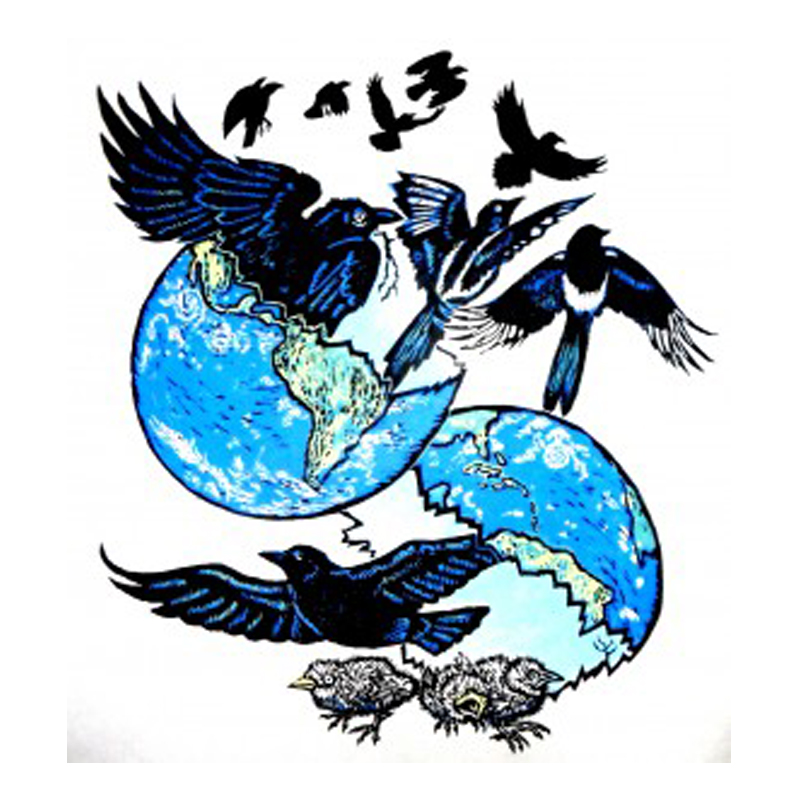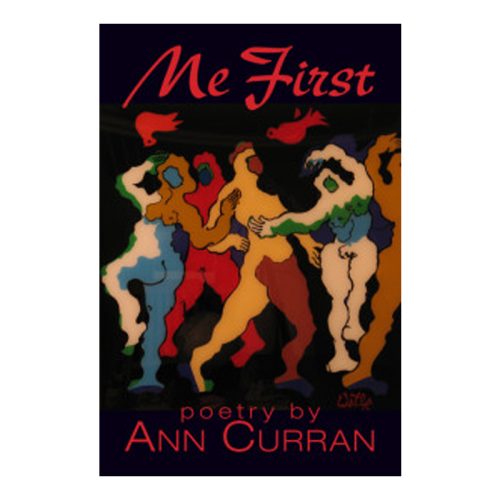By B. J. Buckley
ISBN 978-1-929878-74-1
100 pages; 6 X 9 inches; Trade Paperback
Even a quick glance at YouTube will provide a number of videos demonstrating crows’ ability to solve problems, as well as crows’ ability to play. My favorite shows a crow sliding down a snowy roof, flying to the top again, and repeating the slide. The crow is clearly having a great time, clearly playing. There is no other purpose apparent in the activity. It is simply play.
Recently wildlife biologists have begun to understand the inter-species cooperation that seems to exist between wolves and ravens. Ravens, it seems, will find a carcass and then lead wolves to it. The birds know that they cannot get through the tough skin of an elk, but that once the wolves have gotten through the skin, and eaten their fill, they will leave enough meat for the ravens. Biologists have seen ravens fly down into the middle of a litter of wolf pups playing outside their den. The raven will begin to play with the pups, throwing sticks for them or letting the pups chase him. This interaction demonstrates an intelligence and curiosity that extends well beyond instinctive, rote behavior for finding food and shelter.
Beyond these specific examples, the Corvids, whether crows, ravens, or magpies, have all played significant roles in world folklore and myth. They are, by turns, bringers of wisdom, harbingers of both good and bad news, or tricksters who can aid a hero or unmask a villain. The rhyme at the beginning of this introduction is an Old English chant recited when seeing a flock of crows. The Norse god Odin had a raven as his companion, and the Haida of the American Pacific Northwest used ravens on their totem poles and created elaborate raven masks.
B. J. Buckley’s poems in Corvidae allude to all these attributes and mythologies and more. These poems pay tribute to many of the ways the Corvids have interacted with humans. She uses chants, rhymes, poetic forms, and free verse to create mythology that is both old and familiar and, at the same time, stunningly original. Her poems speak to a reverence for not only the birds themselves but that which is numinous in human experience. Reading these poems changes how we see these beautiful birds, and changes how we see the mystical and spiritual in our lives. These poems should be savored. They should be read aloud to appreciate Buckley’s use of sound, and they could easily be part of personal spiritual practice, read by candlelight or read outdoors where our Corvid relatives may hear them, too, and both laugh in their mocking way and participate in the mystical as they fly across an open sky.
An excerpt from the introduction by Jane Elkington Wohl, PhD.
Look at a sample copy of Corvidae here







